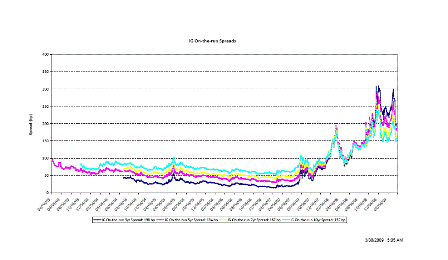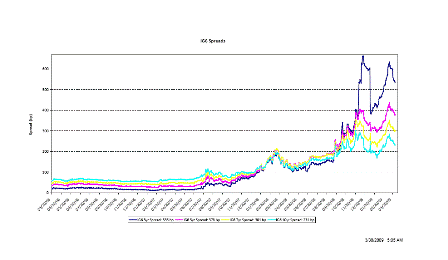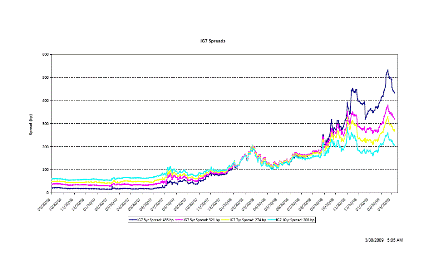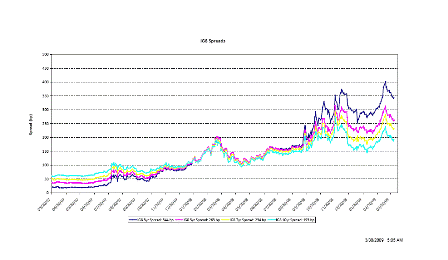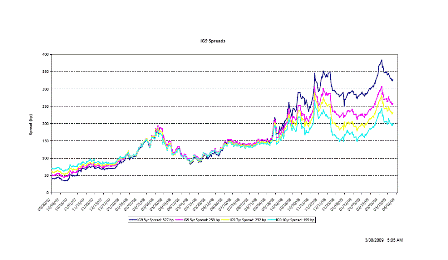- The problem is suboptimal output and employment which is evidence of a lack of aggregate demand.
- Less important what caused the drop in aggregate demand
- The end of the subprime expansion in 2006 reduced the demand for housing
- The wind down of the one time Q2 2008 fiscal adjustment (Q2 2008 GDP was up 2.8%)
- The Mike Masters inventory liquidation that began in July 2008 added supply from inventories, reducing output and employment
- A shift in the propensity to spend due to the pro cyclical nature of credit worthiness
- The end of the subprime expansion in 2006 reduced the demand for housing
- My proposals for restoring aggregate demand:
- A full payroll tax holiday – This tax is taking $1 trillion per year from workers and businesses struggling to make ends meet $1,000 per capita in revenue sharing for the States (approx. $300 billion total).
- Federal funding for a $8 per hour full time job for anyone willing and able to work that includes federal health care.
- Caveat – Unless our demand for motor fuel is cut in half, restoring aggregate demand will also empower the Saudis to set ever higher prices for crude oil which will cause our real terms of trade and standard of living to deteriorate.
- Political options for reducing imported fuel consumption:
-
Regressive – utilizing allocation by price (Carbon tax, fuel taxes)
- Closer to neutral – mandating higher fuel economy requirements for new vehicles, offering incentives to trade up to more fuel efficient vehicles
- Progressive – substantially reducing speed limits to discourage driving and advantage public transportation
-
Regressive – utilizing allocation by price (Carbon tax, fuel taxes)
- A full payroll tax holiday – This tax is taking $1 trillion per year from workers and businesses struggling to make ends meet $1,000 per capita in revenue sharing for the States (approx. $300 billion total).
- Redirect banking to serve public purpose
- Ban banks from all secondary markets.
- Allow bank lending only to serve public purpose.
- Do not use the liability side of banking for market discipline.
- Ban banks from all secondary markets.
- Analysis of current situation
- Our leaders believe they must first ‘get credit flowing again’ to restore output and employment.
- Unfortunately the reverse is the case; restoration of output and employment will restore the flow of credit.
- Government is removing about $1 trillion per year in payroll taxes from employees and employers who can’t meet their mortgage payments and wondering what is causing the financial crisis.
- All moves to date by the Treasury and Federal Reserve have only served to shift financial assets between the public and private sectors. Nothing has directly added to aggregate demand.
- Therefore the economy has continued to deteriorate, with only the ‘automatic stabilizers’ slowly adding financial assets and income to the private sector, as the counter-cyclical deficit rises.
- The rate of federal deficit spending (not counting TARP and other shifting of financial assets that does not directly alter demand, as above) now exceeds 5% of GDP and seems to have begun moving the economy sideways.
- The new fiscal package starts taking effect in April. While modest in size, it isn’t ‘nothing’ and will further support GDP.
- Employment will not grow until real output of goods and services exceeds productivity growth.
- Fuel prices are already moving higher.
- Our leaders believe they must first ‘get credit flowing again’ to restore output and employment.
- Conclusion
- Leadership that doesn’t understand how the monetary system works has needlessly prolonged the recession and delayed the recovery.
- They have put a premium on ‘confidence’ as the President spends countless hours in front of the TV cameras, when in fact loss of ‘confidence’ means only that federal taxes can be lower for a given level of federal spending:
lower confidence = less private sector spending = less aggregate demand = lower taxes or higher federal spending to sustain output and employment
- The headline USD trillions they have directed towards the financial sector has accomplished little or nothing beyond burning up expensive political capital and credibility.
- They are in this way over their heads, and it’s costing us dearly.
- Leadership that doesn’t understand how the monetary system works has needlessly prolonged the recession and delayed the recovery.
[top]

